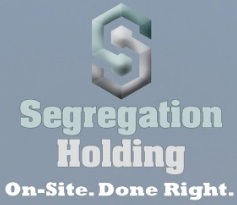 An often over-looked industry for Federal tax incentives is Funeral Homes. This is an industry that is more-often-than-not “family-owned” and has passed from generation to generation. As a result, most Federal and/or state tax incentives are rarely – if ever – investigated. Fortunately, however, for Funeral Home owners, there is a significant tax benefit waiting for you. Most funeral homes have been purchased or constructed with a cost-basis of at least $1,000,000. Additionally, the business is generally paying taxes at the highest tax bracket and are, therefore, ideal candidates for a forensic cost segregation engineered study – and as times continue to change, and the pressure to “keep up with the Jones’s” mounts, many funeral homes across the nation have also invested in significant renovations and improvements – another tax benefit for you. The IRS says you can go back as far as 1987 to reclaim all of that unclaimed tax depreciation and take it all today.
An often over-looked industry for Federal tax incentives is Funeral Homes. This is an industry that is more-often-than-not “family-owned” and has passed from generation to generation. As a result, most Federal and/or state tax incentives are rarely – if ever – investigated. Fortunately, however, for Funeral Home owners, there is a significant tax benefit waiting for you. Most funeral homes have been purchased or constructed with a cost-basis of at least $1,000,000. Additionally, the business is generally paying taxes at the highest tax bracket and are, therefore, ideal candidates for a forensic cost segregation engineered study – and as times continue to change, and the pressure to “keep up with the Jones’s” mounts, many funeral homes across the nation have also invested in significant renovations and improvements – another tax benefit for you. The IRS says you can go back as far as 1987 to reclaim all of that unclaimed tax depreciation and take it all today.
These changes are typically in areas where cost segregation has the greatest impact.  Assets like carpeting, decorative millwork (crown molding, chair rails, wainscoting, and baseboards), chandeliers, decorative lighting and wall sconces, sound, camera, security systems, prep rooms, kitchens, cabinetry, and much more are all considered “tangible personal property” and qualify for 5-year depreciation – not the 39.5-year they are typically set up on. Further, much of the exterior qualifies for 15-year depreciation – things like landscaping, site features (flag pole, site lighting, water fountain, monument signage, parking, sidewalks, landscaping, and more).
Assets like carpeting, decorative millwork (crown molding, chair rails, wainscoting, and baseboards), chandeliers, decorative lighting and wall sconces, sound, camera, security systems, prep rooms, kitchens, cabinetry, and much more are all considered “tangible personal property” and qualify for 5-year depreciation – not the 39.5-year they are typically set up on. Further, much of the exterior qualifies for 15-year depreciation – things like landscaping, site features (flag pole, site lighting, water fountain, monument signage, parking, sidewalks, landscaping, and more).
Funeral Homes and Mortuaries will average a much higher percentage of qualifying “short-life” assets than most commercial buildings. In order to apply MACRS (Modified Accelerated Cost Recovery System) to your property, the IRS states that only someone with competencies in architecture, engineering, or construction and/or construction techniques, is required in order for personal property assets to be accurately identified and segregated. This is not your CPA. Therefore, it is important to choose and engage the right cost segregation firm. Cost segregation providers are not all the same. Many offer “basic” or “desktop” services but do not deliver on all possible areas of benefits or meet IRS requirements. For example, the average cost segregation firm only investigates 17 divisions of the building code. There are 32. Why only 17 then? Simple. It saves time, and therefore, money to their firm. Of course, this “savings” will “cost” you money. If 15 divisions of the building code are not researched, then there will be assets not included in their cost segregation “study.” Those assets equal more money to you, the funeral home owner.
Always seek out one of the fourteen “forensic” cost segregation engineering firms in America, like Segregation Holding. We have signed a commitment to utilize all 32 primary divisions of the building code 100% of the time, regardless of the size of the building, and they will always perform on-site inspections of your property. In doing so, you guarantee yourself the maximum available tax benefits under the Internal Revenue Code. Cost segregation is an engineering tool you can utilize that will reduce your taxes and increase your profitability.
Getting the process started is easy. To learn exactly how much you are due, free and at no obligation, simply complete and submit our Client Questionnaire, or contact Jeff Hobbs, Segregation Holding, a true forensic cost segregation engineering firm based in Texas and serving all fifty states, with over 17,000 forensic studies completed.


